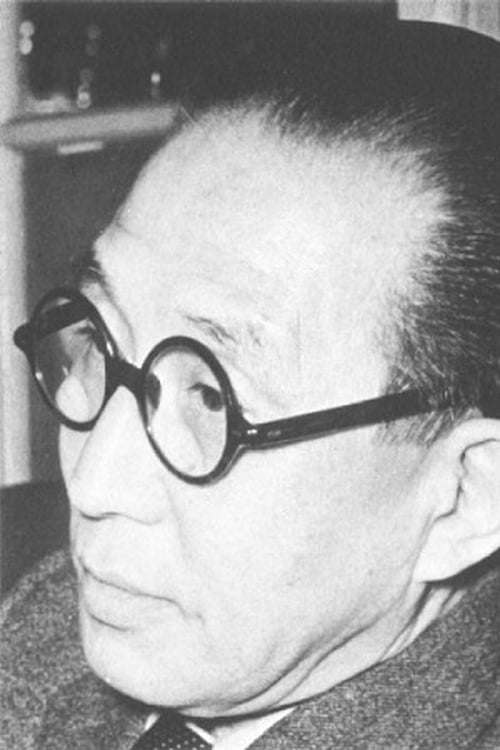Teinosuke Kinugasa
出生 : 1896-01-01, Kameyama, Mie Prefecture, Japan
死亡 : 1982-02-26
略歴
Teinosuke Kinugasa (衣笠 貞之助 Kinugasa Teinosuke) (1 January 1896 – 26 February 1982) was a Japanese actor and film director. He was born in Kameyama, Mie Prefecture and died in Kyoto. Kinugasa won the 1954 Palme d'or at Cannes for Jigokumon (The Gate of Hell).
Kinugasa was among the pioneers of Japanese film, but began his career as an actor specializing in female roles (onnagata) at the Nikkatsu studio. When Japanese cinema began using actresses in the early 1920s, he switched to directing and worked for such producers as Shozo Makino before going independent to make his best known film, A Page of Madness (1926).
On February 26, 1982, Kinugasa died at the age of 86.
Description above from the Wikipedia article Teinosuke Kinugasa, licensed under CC-BY-SA, full list of contributors on Wikipedia.
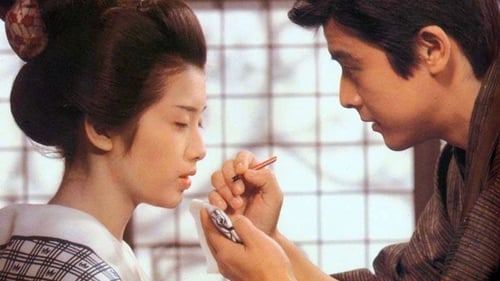
Screenplay
明治時代初頭の大阪。裕福な薬問屋の箱入り娘として生まれ育った、美しい盲目の女性・お琴。店の奉公人の佐助がお気に入りで、何かと自分の身の回りの世話をさせるが、一方で佐助もそのわがままに耐えながら、彼女に献身的に尽くす。やがて店の主人に許され、お琴専属の付き人となった佐助は同時に、三味線の名手であるお琴のもとで厳しい稽古に励み、芸の腕前が上達する。やがて意外にも、お琴が誰かを相手に妊娠する事態が起きる。

Director
During a Soviet circus tour in Japan, a small street musician, Ken, meets a clown, Yuri Nikulin. Upon learning that his sick father is being treated in the Soviet Union, Ken sets off in search of him. The friendship of the great clown and the boy continues in Moscow.

Screenplay
Yoso is truly a lost classic, set in the Nara Era (710-794), from Kinugasa Teinosuke the same writer/director who gave us the recognized classic Gate of Hell (Jigokumon, 1952) & the milestone silent surrealist masterpiece A Page of Madness (Kurutta Ippeji, 1926).

Director
Yoso is truly a lost classic, set in the Nara Era (710-794), from Kinugasa Teinosuke the same writer/director who gave us the recognized classic Gate of Hell (Jigokumon, 1952) & the milestone silent surrealist masterpiece A Page of Madness (Kurutta Ippeji, 1926).

Director
Three stories about the relationship between men and women: "Playgirl" (Masumura/Shirasaka), "Company No. 2" (Yoshimura/Kasahara), and "San Nyotai" (Kinugasa/Shindô).
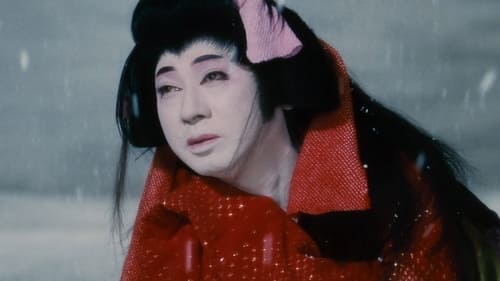
Screenplay
三上於菟吉の同名時代小説を、伊藤大輔と衣笠貞之助が脚色、和田夏十がシナリオ化し、市川崑がメガホンをとった。1935年版に主演した長谷川一夫が、再び中村雪之丞と闇太郎の二役を演じた。その他、山本富士子や若尾文子、市川雷蔵、勝新太郎など豪華な出演者が顔をそろえた。長谷川一夫300本記念作品。
江戸で興行を張る上方歌舞伎の女形役者・中村雪之丞は、父を冤罪で陥れ自死に至らしめた土部三斎と広海屋の姿を認めた。三斎の娘の浪路は雪之丞に恋をし、雪之丞は彼女を利用して父の仇を討とうとする。江戸の飢饉に乗じて米を買い占めていた川口屋は、雪之丞にそそのかされた広海屋に邪魔され破産、広海屋に放火した。怒った広海屋は川口屋を絞め殺すが、誘拐しようとした浪路に刺されてしまう。

Screenplay
Shinjiro is a rambler, a single sword carrying lone wolf with only his fighting skills to protect him. He doesn’t know where his road leads, only that he must find his lost sister, and the ronin who stole her away. The ronin that Shinjiro has sworn to kill. On the road he’ll find his sister and test his blade against his bitter enemy. He also encounters a lost boy searching for his father, a boy he will swear to protect, and find his own lost love, a daughter of the yakuza who draws him into a frenzied and bloody battle between rival yakuza gangs for the control of a frightened town.

Director
One of Kinugasa's last films--based on the story by Tanizaki Jun'ichirō.

Screenplay
Disguised as a beggar monk, Ryunosuke is harassed along the road by the rowdy members of a country dojo or fencing school malingering outside their fencing hall. The third film in the Satan's Sword trilogy.

Writer
Late romance by acclaimed filmmaker Kinugasa Teinosuke.

Director
Late romance by acclaimed filmmaker Kinugasa Teinosuke.
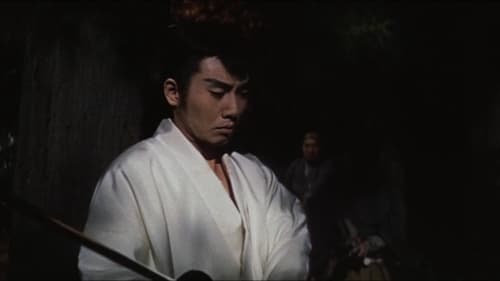
Screenplay
The sequel to Daibosatsu tôge (1960) and the second of the trilogy follows the adventures of Ryunosuke Tsukue after he is blinded.
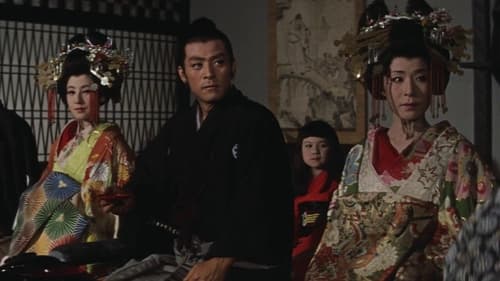
Screenplay
大映版シリーズの第一作。富士を遠望する大菩薩峠の頂上、机竜之助は居合わせた老巡礼を一刀の下に切り捨てた。御岳山奉納試合で宇津木文之丞の命を奪った竜之助は霧の御坂で剣陣を突破すると、力ずくで手篭めにした文之丞の妻、お浜を伴って江戸へと出奔する。それは竜之助の流浪の旅の始まりだった――。

Screenplay
Ko Tanomura, who was ordered to study abroad in the United States for two years as a youth executive at Haneda Airport and a royal industry, was looking for the appearance of Sako Ozegawa from a large number of see-offs. --Kou's father, Cheongju, is an authority on religious studies, and Orie is his third wife. Eiko, who is a distant relative of Orie, came to Tokyo to care for her sick. Two months ago, Ko, who first met Eiko, was deeply moved...

Screenplay
Set in the middle of the Edo period (1603-1867), this tragic love story takes its cue from a celebrated historical case tried by magistrate Tadasuke Ooka, whose shrewd legal decisions became the stuff of legend. Okuma Shirokoya, the daughter of a lumber merchant in Edo (today’s Tokyo), embarked on an affair and was executed after conspiring with her maid to murder her husband. (Source: https://festival.ilcinemaritrovato.it/en/proiezione/shirokoya-komako/)

Screenplay

Director

Writer

Director

Screenplay
The story follows Oshino, a geisha who is trying to start a new life with a lover who is a painter. However, her past filled with debts and pimps catches up to her.

Director
The story follows Oshino, a geisha who is trying to start a new life with a lover who is a painter. However, her past filled with debts and pimps catches up to her.
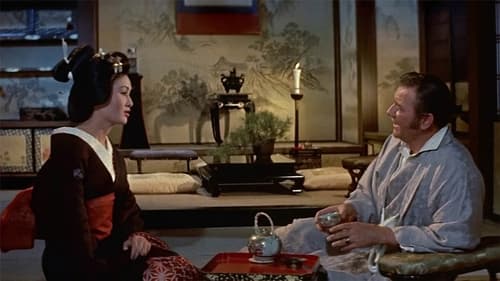
Script Supervisor
Townsend Harris is sent by President Pierce to Japan to serve as the first U.S. Consul-General to that country. Harris discovers enormous hostility to foreigners, as well as the love of a young geisha.
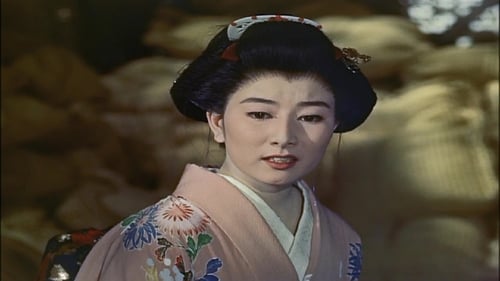
Screenplay
From the pen of Yoshikawa Eiji comes this exciting story. The Naruto Strait separates Tokushima from the islands of Awaji and Honshu. On Tokushima the mad lord dreams of conquest and forges a bloody revolt against the Tokugawa shogunate. A mysterious swordsman named Noriyuki Gennojo has crossed Naruto’s waters to uncover the Awa clan’s secrets. He puts his life on the line after finding a testament of Awa’s secrets, written in blood by a dying man. Joining Noriyuki are a female ninja who loves him, and the beautiful daughter of an enemy who’s sworn to kill him. Awa’s defenders willl stop at nothing to prevent the blood-soaked letter from reaching the shogun.

Director
From the pen of Yoshikawa Eiji comes this exciting story. The Naruto Strait separates Tokushima from the islands of Awaji and Honshu. On Tokushima the mad lord dreams of conquest and forges a bloody revolt against the Tokugawa shogunate. A mysterious swordsman named Noriyuki Gennojo has crossed Naruto’s waters to uncover the Awa clan’s secrets. He puts his life on the line after finding a testament of Awa’s secrets, written in blood by a dying man. Joining Noriyuki are a female ninja who loves him, and the beautiful daughter of an enemy who’s sworn to kill him. Awa’s defenders willl stop at nothing to prevent the blood-soaked letter from reaching the shogun.

Writer

Screenplay
Floating Vessel (源氏物語 浮舟 , Ukifune) is a 1957 color Japanese film directed by Teinosuke Kinugasa. Drawn from parts of the famous Genji monogatari by Lady Murasaki.

Director
Floating Vessel (源氏物語 浮舟 , Ukifune) is a 1957 color Japanese film directed by Teinosuke Kinugasa. Drawn from parts of the famous Genji monogatari by Lady Murasaki.
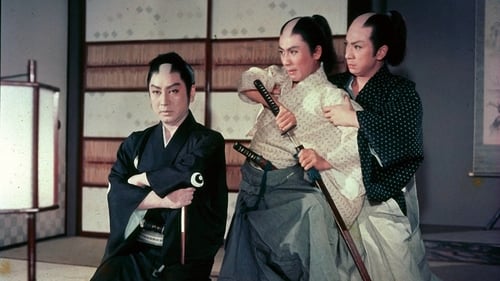
Screenplay
During the bloody era of the Tokugawa Shogunate collapse, a man appeared capable of overthrowing a corrupt government and ending the feud between the Choshu and Satsuma clans. This is the story of Tsukigat Khanpayit, the sword maker of the Choshu clan, who, along with Katsuro Kogoro and Sakamoto Ryoma, sought to fulfill the dream of a new peaceful era in Japan. Can he realize his ideals or will he die in the chaos of internecine fights...

Director
During the bloody era of the Tokugawa Shogunate collapse, a man appeared capable of overthrowing a corrupt government and ending the feud between the Choshu and Satsuma clans. This is the story of Tsukigat Khanpayit, the sword maker of the Choshu clan, who, along with Katsuro Kogoro and Sakamoto Ryoma, sought to fulfill the dream of a new peaceful era in Japan. Can he realize his ideals or will he die in the chaos of internecine fights...

Writer

Screenplay
The story of Yoshinaka during the tumultuous period of warring related to us in the Heike Monogatari. Close in setting to Kinugasa’s famous Gate of Hell (1953).

Director
The story of Yoshinaka during the tumultuous period of warring related to us in the Heike Monogatari. Close in setting to Kinugasa’s famous Gate of Hell (1953).

Writer

Screenplay
Hayase, a schoolteacher, assists Sakai in editing a German-Japanese dictionary. Hayase owes much to Sakai, as Sakai raised him for 13 years after Hayase lost his parents in a war. Hayase has been secretly married to Otsuta, a former geisha, and has been unable to tell Sakai of the marriage, aware as he is that Sakai wants him to marry his daughter, Taeko. Otsuta wants Hayase to tell Sakai about her, but understands the difficulty of his position. At a festival, Otsuta is mistaken for a pickpocket and taken to the police. Because of her background as a geisha, newspaper reporters eagerly delve into her past and report that she has been married to Hayase. Unaware of what has been printed in the papers, Hayase decides to tell Sakai about his marriage. Sakai shows the newspaper to him and orders Hayase to part with Otsuta. Given no chance to explain, Hayase accepts Sakai's order.

Director
Hayase, a schoolteacher, assists Sakai in editing a German-Japanese dictionary. Hayase owes much to Sakai, as Sakai raised him for 13 years after Hayase lost his parents in a war. Hayase has been secretly married to Otsuta, a former geisha, and has been unable to tell Sakai of the marriage, aware as he is that Sakai wants him to marry his daughter, Taeko. Otsuta wants Hayase to tell Sakai about her, but understands the difficulty of his position. At a festival, Otsuta is mistaken for a pickpocket and taken to the police. Because of her background as a geisha, newspaper reporters eagerly delve into her past and report that she has been married to Hayase. Unaware of what has been printed in the papers, Hayase decides to tell Sakai about his marriage. Sakai shows the newspaper to him and orders Hayase to part with Otsuta. Given no chance to explain, Hayase accepts Sakai's order.

Director
A Girl isn't Allowed to Love is a 1955 Japanese film directed by Teinosuke Kinugasa.

Writer

Screenplay
A Japanese drama featuring the one-eyed, one-armed swordsman
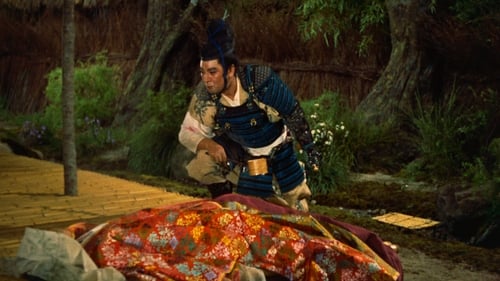
Screenplay
Japan, 1159. Moritō, a brave samurai, performs a heroic act by rescuing the lovely Kesa during a violent uprising. Moritō falls in love with her, but becomes distraught when he finds out that she is married.

Director
Japan, 1159. Moritō, a brave samurai, performs a heroic act by rescuing the lovely Kesa during a violent uprising. Moritō falls in love with her, but becomes distraught when he finds out that she is married.

Screenplay
Dedication of the Great Buddha is a 1952 Japanese film directed by Teinosuke Kinugasa. It was entered into the 1953 Cannes Film Festival.

Director
Dedication of the Great Buddha is a 1952 Japanese film directed by Teinosuke Kinugasa. It was entered into the 1953 Cannes Film Festival.

Writer

Director
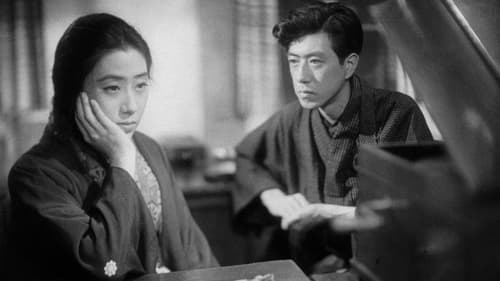
Writer
Sumako, a country girl, becomes a great actress with the help of Hogetsu,a scholar who brought some of European realism to the Japan's stage. The relationship leads to the end of his marriage and the breakup of his Arts Society. This is another version of Kenji Mizoguchi's film "The Love of Sumako the Actress" ("Joyû Sumako no koi"), from the same year. Both tells the story of the famous actress Sumako Mitsui (1886-1919), considered the first great modern theater actress in Japan. Mizoguchi himself is said to have preferred Kinugasa's version.

Director
Sumako, a country girl, becomes a great actress with the help of Hogetsu,a scholar who brought some of European realism to the Japan's stage. The relationship leads to the end of his marriage and the breakup of his Arts Society. This is another version of Kenji Mizoguchi's film "The Love of Sumako the Actress" ("Joyû Sumako no koi"), from the same year. Both tells the story of the famous actress Sumako Mitsui (1886-1919), considered the first great modern theater actress in Japan. Mizoguchi himself is said to have preferred Kinugasa's version.

Director
Omnibus of love stories from 1947 directed by famous directors, featuring big stars.

Director
Lord for a Night is a 1946 Japanese film directed by Teinosuke Kinugasa.

Writer
This epic depicts the battle between Uesugi Kenshin and Takeda Shingen. The focus of the story is the struggle by the unit leader in charge of the main supply wagons and the supply troops to transport materiel to the Uesugi army. To this are added episodes involving an itinerant woman.

Director
This epic depicts the battle between Uesugi Kenshin and Takeda Shingen. The focus of the story is the struggle by the unit leader in charge of the main supply wagons and the supply troops to transport materiel to the Uesugi army. To this are added episodes involving an itinerant woman.

Screenplay

Director

Screenplay
When Sentarô’s father is killed by a drunken samurai, Sentarô avenges him. His deed puts him on the run and leaves his sister behind. While running from both the authorities and the assassins, Sentarô meets with the beautiful travelling-actress Oshima who takes him under her protection.

Director
When Sentarô’s father is killed by a drunken samurai, Sentarô avenges him. His deed puts him on the run and leaves his sister behind. While running from both the authorities and the assassins, Sentarô meets with the beautiful travelling-actress Oshima who takes him under her protection.

Screenplay
The Siege of Osaka

Director
The Siege of Osaka

Screenplay
dir: Teinosuke Kinugasa

Director
dir: Teinosuke Kinugasa

Writer
An onnagata (female impersonator) of a Kabuki troupe avenges his parents' deaths. Remade in 1963 as Yukinojô Henge.

Director
An onnagata (female impersonator) of a Kabuki troupe avenges his parents' deaths. Remade in 1963 as Yukinojô Henge.

Screenplay
Period film from 1934.

Director
Period film from 1934.

Writer
The first half of the movie depicts a man's jealousy of his best friend and the woman he love. The second part depicts a hero who is ready to put the past behind him and risk his life for his friend.

Director
The first half of the movie depicts a man's jealousy of his best friend and the woman he love. The second part depicts a hero who is ready to put the past behind him and risk his life for his friend.

Screenplay
A mournful masterpiece by Kinugasa Teinosuke

Director
A mournful masterpiece by Kinugasa Teinosuke

Screenplay

Director

Screenplay
This 1932 adaptation is the earliest sound version of the ever-popular and much-filmed Chushingura story of the loyal 47 retainers who avenged their feudal lord after he was obliged to commit hara-kiri due to the machinations of a villainous courtier. As the first sound version of the classic narrative, the film was something of an event, and employed a stellar cast, who give a roster of memorable performances. Director Teinosuke Kinugasa was primarily a specialist in jidai-geki (period films), such as the internationally celebrated Gate of Hell (Jigokumon, 1953), and although he is now most famous as the maker of the avant-garde silent films A Page of Madness (Kurutta ichipeji, 1926) and Crossroads (Jujiro, 1928), Chushingura is in fact more typical of his output than those experimental works. The film ranked third in that year’s Kinema Junpo critics’ poll, and Joseph Anderson and Donald Richie noted that 'not only the sound but the quick cutting was admired by many critics.

Director
This 1932 adaptation is the earliest sound version of the ever-popular and much-filmed Chushingura story of the loyal 47 retainers who avenged their feudal lord after he was obliged to commit hara-kiri due to the machinations of a villainous courtier. As the first sound version of the classic narrative, the film was something of an event, and employed a stellar cast, who give a roster of memorable performances. Director Teinosuke Kinugasa was primarily a specialist in jidai-geki (period films), such as the internationally celebrated Gate of Hell (Jigokumon, 1953), and although he is now most famous as the maker of the avant-garde silent films A Page of Madness (Kurutta ichipeji, 1926) and Crossroads (Jujiro, 1928), Chushingura is in fact more typical of his output than those experimental works. The film ranked third in that year’s Kinema Junpo critics’ poll, and Joseph Anderson and Donald Richie noted that 'not only the sound but the quick cutting was admired by many critics.

Director
In the age of priests and warriors which the film denounces, a woman revolts after she is sold as a prostitute.

Writer
江戸の裏町でひっそりと暮らす姉弟。弟はある女をめぐり傷害事件を起こしてしまう。一方姉は借金返済に身売りの話を持ちかけられ

Director
江戸の裏町でひっそりと暮らす姉弟。弟はある女をめぐり傷害事件を起こしてしまう。一方姉は借金返済に身売りの話を持ちかけられ

Director
First film adaptation of the kabuki play Benten Kozo, about a thief who steals from the rich and gives to the poor...
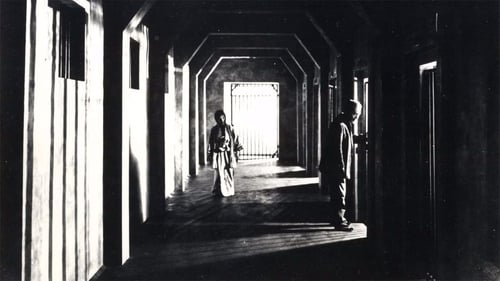
Producer
A man takes a job at an asylum with hopes of freeing his imprisoned wife.

Writer
A man takes a job at an asylum with hopes of freeing his imprisoned wife.

Director
A man takes a job at an asylum with hopes of freeing his imprisoned wife.

Director
Directed by Teinosuke Kinugasa.

Director

A film adaptation of the play by Leo Tolstoy.
